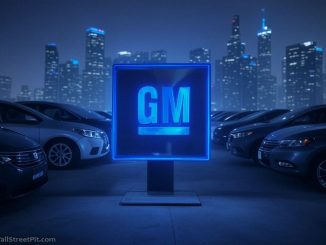The Big Three need a hybrid vehicle, if you will — a combination of chapter 11 bankruptcy and a bailout. For every taxpayer dollar they receive, the automakers should be required to come up with $2 from their stakeholders (creditors, shareholders, executives, white and blue collar employees), just as stakeholders would have to sacrifice under Chapter 11.
This is the only way GM, Ford, and Chrysler can possibly accumulate enough money to survive and restructure. It’s also the way to avoid favoring the Big Three over foreign automakers in the US (if they want to make the same $2 for every $1 sacrifice, they can do so, too.) And it’s a way to avoiding the “moral hazard” of every other big company that gets into trouble during this downturn expecting Washington to bail it out as well.
The only reason for taxpayers to put up even one dollar for every two that the automakers put up is the significant social cost that would occur if any one of the Big Three were to rapidly shrink — including unemployment insurance, increased liabilities for the Pension Benefit Guarantee Corporation, lost tax revenues, and costs associated with large numbers of people suffering losses of wages and employment.
Wall Street is a different story entirely. There’s no good reason for taxpayers to continue bailing out the Street. TARP hasn’t worked. Some $350 billion later, credit markets are still quite frozen. The only obvious beneficiaries of TARP have been the executives, creditors, and shareholders of the big Wall Street banks, who have come out better than they would have had there been no Wall Street bailout.
From here on, Wall Street banks that can’t pay their creditors should have to resourt to Chapter 11 of the bankruptcy code, which allows a firm to pay off its creditors — say, 30 cents on the collars — and then wipe the slate clean. Chapter 11 is ideally suited to the Wall Street credit crisis because it creates a forum in which creditors are forced to negotiate and ultimately accept a “market” price for the securities they hold — thereby accomplishing what the Treasury first tried to do under the Troubled Assets Relief Program: create market valuations for these otherwise unmarketable securities. And by allowing the big banks to clean up their balance sheets and get rid of their “toxic” securities, Chapter 11 clears the way for the banks to attract new investors now scared off by the unknown dimensions of potential losses.
There’s no reason to suppose Chapter 11 would be especially difficult for a big bank, nor are there likely to be significant social costs. Prior to 1978, a company could seek Chapter 11 protection only if it was insolvent or was unable to pay maturing debt, and Chapter 11 normally meant that a company’s managers would have to relinquish control. But in 1978 Congress amended Chapter 11 to delete the insolvency test, and also to allow managers to keep control of a company unless a bankruptcy judge explicitly finds them to be incompetent or untrustworthy. Since then, instead of presiding over meetings of creditors where claims are bargained out, judges have left most decisions — even major ones — to existing managers.
Naysayers point to Lehman Brothers as evidence that Chapter 11 won’t work. But it wasn’t tried, mainly because the Treasury was by then signaling that it would bail out troubled banks. Lehman apparently chose to play a game of chicken with the Treasury, hoping and expecting the Treasury would bail it out. When the Treasury finally refused, Lehman was pushed into liquidation because it hadn’t prepared the way for Chapter 11. Chapter 11 also should have been used by Citigroup and by AIG.
Bottom line: Detroit should get a hybrid vehicle, one third bailout and two-thirds Chapter 11 — that is, $1 of taxpayer investment for every $2 of sacrifice by Big Three stakeholders. But Wall Street should not get the second $350 billion tranche of the Troubled Asset Relief Program. Wall Street deserves, and the public can do better if Wall Street utilizes, Chapter 11.
- Bulenox: Get 45% to 91% OFF ... Use Discount Code: UNO
- Risk Our Money Not Yours | Get 50% to 90% OFF ... Use Discount Code: MMBVBKSM
Disclaimer: This page contains affiliate links. If you choose to make a purchase after clicking a link, we may receive a commission at no additional cost to you. Thank you for your support!




Leave a Reply